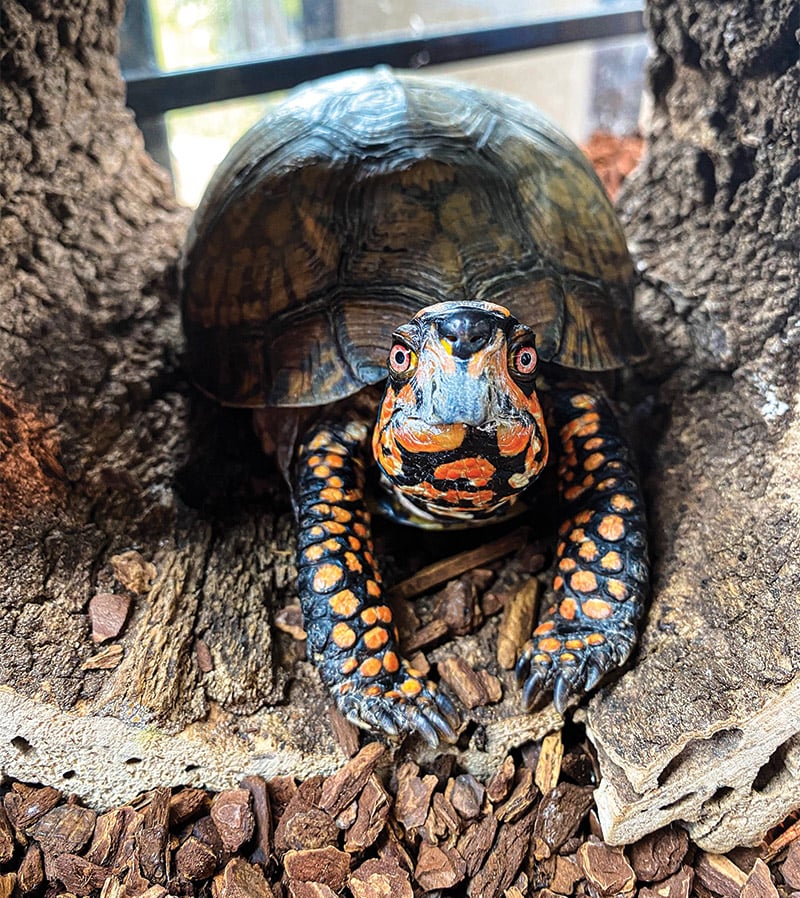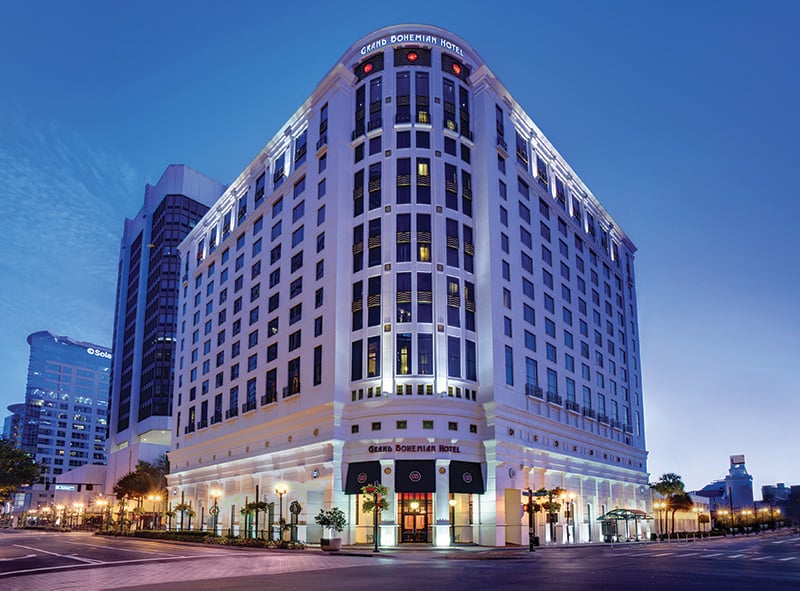Travel: Norway All the Way
Explore breathtaking Iceland and adventurous Norway with two Central Floridians.

An evening mountain hike with a breathtaking view in Romsdalseggen, Norway. Courtesy of Visit Norway
We had gingerly picked our way through more than two miles of treacherous, seemingly unending jumbles of rock that had been spit out of the bowels of the earth decades ago by machinery drilling for coal. One misstep could have led to a sprained ankle or worse.
But up ahead was the payoff: a glacier shrouded in the mist of low-hanging clouds, the sun barely a fuzzy white dot. We strapped crampons on our shoes and tentatively tested out the spikes on the ice.
Being flat-landers from Central Florida, we weren’t sure what to expect. But the crampons held and we marched across a nearly half-mile stretch of ice and snow, more than 1,000 feet above sea level and well inside the frosty Arctic Circle. The North Pole was just 817 miles away.
Accompanied by my spouse, Judy Watson Tracy, two good friends, Jerry and Lisa Brown, a guide, his dog and two of his trainees, we were in the hinter-lands of Longyearbyen, a small fishing village of 2,400 residents on an island near the northwest tip of Norway.
Nestled in a valley on the shores of the Adventfjord and ringed by steep mountains and glaciers, the scenery of Longyearbyen was so breathtaking, even our guide Nico Mookhoek conceded, “Sometimes, I don’t stop and look like I should.”
Longyearbyen, the world’s northernmost settlement, was one of nine stops we made late last summer while on a two-week Viking cruise that started in Reykjavik, Iceland and ended in Bergen, Norway.
The goal was twofold for Judy and me: an early celebration of our 40th wedding anniversary and an escape from the stifling, soul-numbing summer heat of Orlando.
We succeeded on both counts.
The weather was glorious, at least from our perspective. Lows generally were in the 40s and highs in the 50s, occasionally in the low 60s. We avoided rain for all but parts of three days.
The people of Norway and Iceland were friendly and welcoming. Virtually everyone spoke English. Our excursions with friends were invigorating, enlightening and routinely offered awe-inspiring vistas.
In addition to the Browns, we also traveled with Bob and Andrea Purdon—like the Browns, from Lake County—and Don and Michelle Goodrum of Mesa, Arizona.
Our adventure started in Reykjavik after we flew in on separate air carriers. We rented a home for two nights near the town of Selfoss, about an hour’s drive southeast of Reykjavik.
Among the highlights:
Swimming in the Secret Lagoon, known locally as Gamla Laugin. Opened in 1891, it is the oldest lagoon in Iceland and is heated to about 100 degrees by water coming from a hot spring. The water was soothing to muscles a bit achy from hiking and being cramped in airplane economy seating.
Taking an all-terrain vehicle tour to Gígjökull, a valley that once was a massive lake that emptied in a matter of hours after the volcano at Eyjafjallajökull erupted in 2010. What was left is a barren, lunar-like landscape of lava rock and ash interspersed with streams of glacier water. No one was injured when the volcano blew, but clouds of ash caused the cancellation of 100,000 flights a week after the event.
We not only hiked in the region, we witnessed a roundup of a couple dozen Icelandic horses, which are about the size of a pony and wander freely about the interior of the country.
Iceland, roughly the size of Kentucky and with a population of around 350,000, was almost an amalgam of places we have hiked before: the wide open rural spaces dotted by sheep like the Scottish Highlands; the mountains and canyons of Utah; the dark volcanic rock and ash of Hawaii.
Axel, our guide to Gígjökull, compared Iceland to a map that continually unfolds to an entirely different view or experience. “So much is unexpected,” he said.
We boarded the Viking ship Neptune on a Monday and, after a stop in the tiny Icelandic port of Isajordur, we spent two days on the Norwegian Sea before docking in Longyearbyen. It is named after an American who founded a coal-mining company early during the 20th Century.
On Longyearbyen — which hosts an international vault that stores duplicates of seeds conserved in gene banks around the world — we took the epic 7-mile hike that included the trek across the glacier. Reindeer were common, though they were much smaller than those typically portrayed in American books and movies.
Although all of the next seven ports were memorable, two stood out:
Narvik, on the shores of the Ofotfjorden fjord, is known for ferocious battles between Nazi Germany and British and French forces during World War II. Narvik’s port was especially important because it does not freeze during the winter thanks to the effects of the Gulf Stream.
We took a ride on the so-called Arctic Train, Norway’s most northerly railway and the link to the iron ore mines. At 26-miles-long one way, the train runs from Narvik to just short of the Swedish border, with stunning views of a fjord as well as sheer, high mountains.
The most picturesque stop of the entire two weeks was Geiranger, a Unesco World Heritage site. Another small village, Geiranger sits at the end of the Geirangerfjord, which is considered one of the world’s natural beauties. The fjord is 161 feet deep while the surrounding mountains are up to 1-mile high, the caps covered in snow.
We chose a hike 1,800 feet up from the town to Storeseterfossen, a popular waterfall destination. The main attraction is a path cutting beneath and behind the waterfalls.
Norway is slightly larger than the state of New Mexico and has a population of 5.5 million people. Like much of Scandinavia, cod is pretty much a staple food and a popular drink is Aquavit, which is distilled from grain or potatoes and typically infused with caraway and dill. It tasted like cough syrup to me.
The people of both Iceland and Norway are well aware of global warming and do not dispute it is man made, having seen temperature rising and their glaciers melting. The summer was one of the warmest and wettest on record. There’s a big push for green energy, such as hydro, thermal and wind power, and the preponderance of new cars sold there are electric.
The collective impression of our group, which Bob Purdon nicknamed the Viking 8, was one of gratitude for seeing a part of the world so different from ours.
Jerry Brown said he experienced almost a “mystic feeling at the top of the world.” His spouse of 39 years, Lisa, said, “Norway by boat was better than I was anticipating. Think we had the best of both worlds going so far north and south. People are hardy and handsome.”
Bob Purdon recalled a bike ride we took in the cold and rain in Bergen, where our guide advised us that, “There is no bad weather in Norway; only bad clothing choices.”
Thoroughly soaked, our teeth nearly chattering, we could hardly disagree. But we had no regrets about our time in Iceland and Norway.





